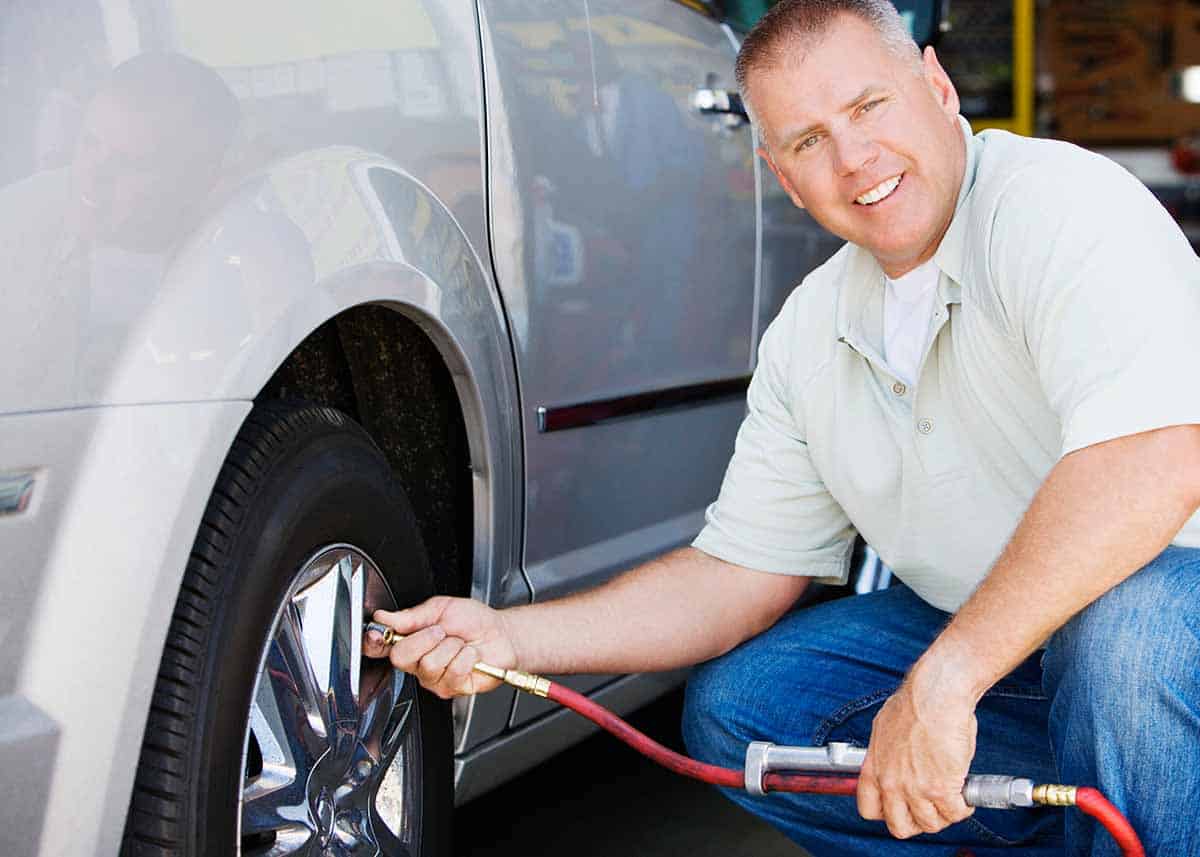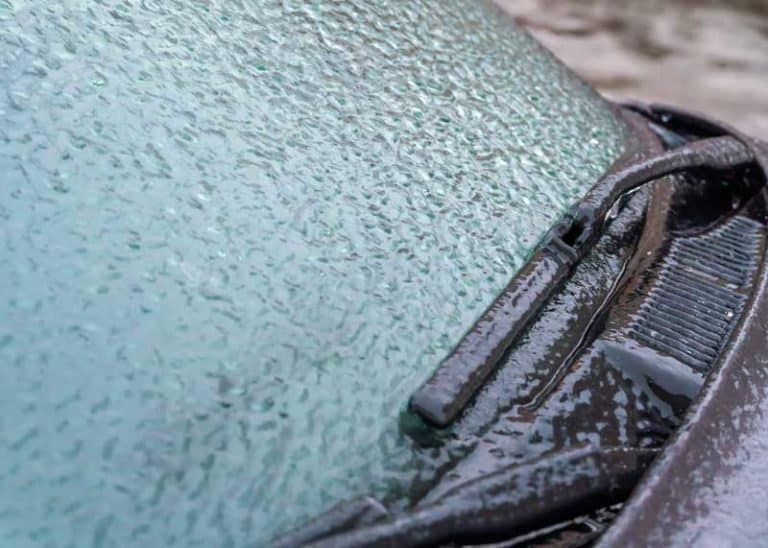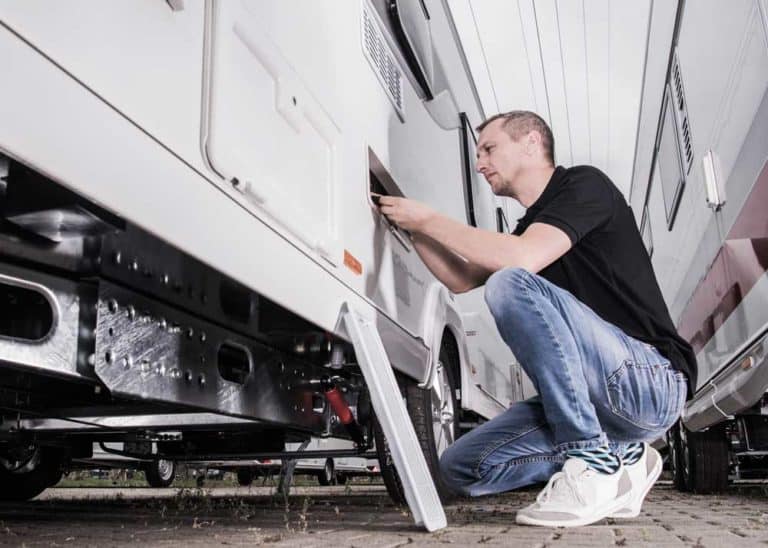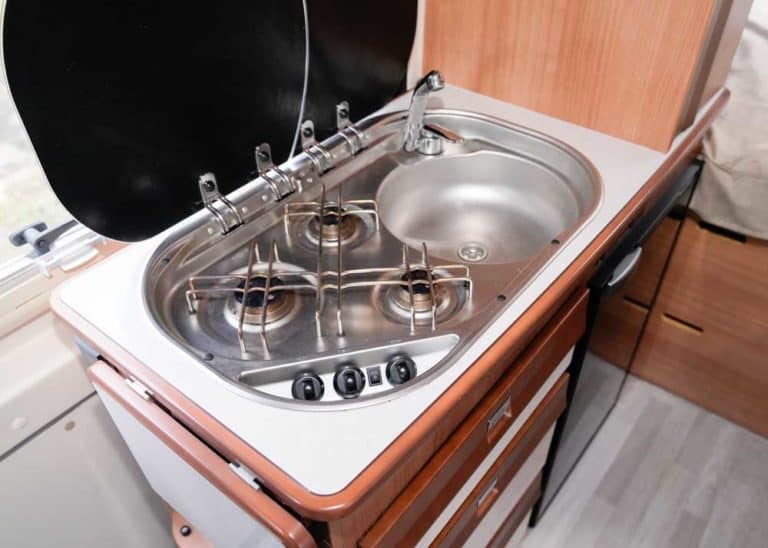RV Tire Pressure Guide: Chart, Inflation, Tips, Warnings
Ready to hit the road for an RV adventure? Don’t forget to check proper tire inflation. RV tire pressure affects safety, tire life, and fuel efficiency.
In this guide, you’ll learn about proper RV tire pressure, how to maintain it, tips for dealing with low tire pressure, and keeping your tires in pristine condition when traveling.
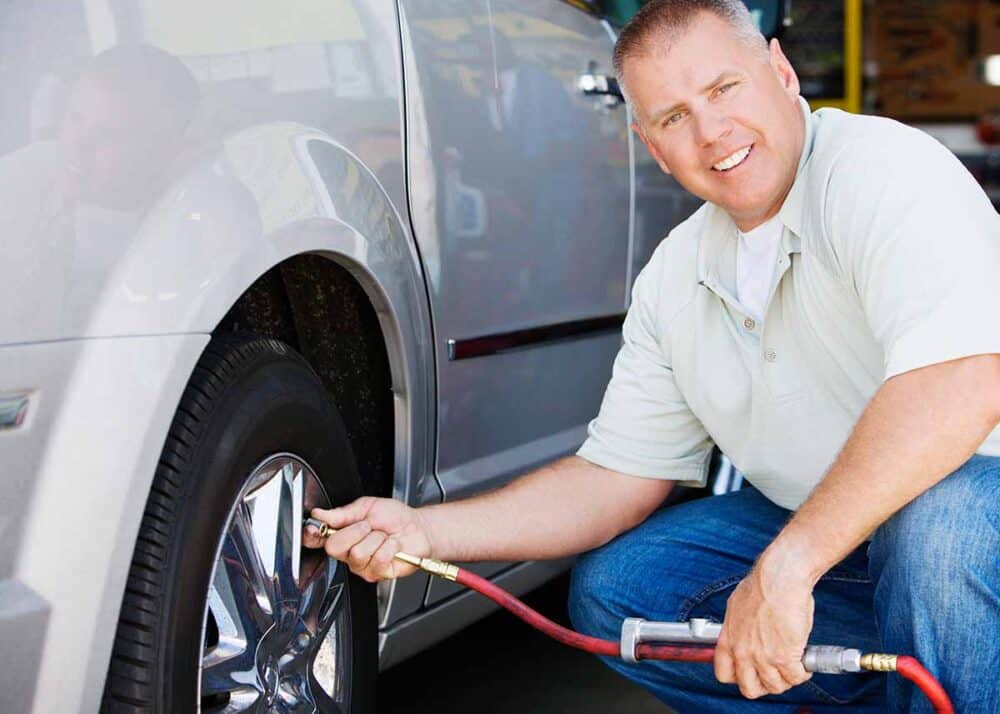
Before loading up your RV, let’s review a few things.
What You Need to Know About RV Tire Pressure
Proper tire pressure is important for safety, comfort, and tire longevity.
Tire pressure, measured in pounds per square inch, is the air inside your tire. Correct PSI is different across the different tire types – especially RV tires.
1. Check Manufacturer Charts
RV tire pressure is determined by the manufacturer of your tires and your RV. You should consult your RV’s owner’s manual and your tire’s specifications. Here is a great set of tire inflation charts.
Whatever the recommended PSI, it is critical to maintain the correct PSI level.
- Aspect ratio
- Load index
- Speed rating
- Section width
- Maximum inflation pressure and load.
Here’s how to make sense of the tire markings.
2. Determine Proper PSI for RV
Once you have the recommended tire pressure for your rig and tires, you next need to confirm the specific weight of your rig.
Determining the correct tire pressure depends on the weight. And not only total RV weight but also per axle and each tire position.
How do you check the tire pressure of RV tires?
3. Checking RV Tire Pressure
It’s time to grab your tire pressure gauge and check each tire.
- To check RV tire pressure, unscrew the valve cap from the tire, insert the pressure gauge into the air nozzle, and press.
- You should hear a sudden burst of air and see the gauge indicator extend out.
Important note: Ensure your tires are cold and haven’t been on the road for several hours. This will give a more accurate reading.
4. Adding Air to RV Tires
While you’re checking tire pressure, you may realize your tires need a bit more air.
You can accomplish this in several ways.
- Many gas stations and convenience stores have spots where you can add air to your tires for free or a small fee. Many gas station air compressors allow you to input the precise PSI you need, and it’ll add that to your tires.
- RV dealerships such as Camping World can also come in clutch here – especially if they sell RV tires. In addition, many dealerships can top off your tires while you go inside for anything else you need.
- Dealerships and outdoor stores also sell air compressors just for tires. You may want to purchase a compressor to place your mind at ease.
Always check the RV owner’s manual and your tire manufacturer’s specifications for the best and most efficient specifications.
Checking RV tire pressure is an important step when dewinterizing your camper.
5 RV Tire Pressure Warnings
As mentioned, proper RV tire pressure will keep you on the road without any issues. However, many factors can affect your tire’s PSI levels.
Let’s go over a few of those.
Handling Issues
An underinflated tire becomes mushy and less flexible, leading to trouble with how your RV handles on the road.
Tire Wear Troubles
Your tires will wear in weird and inconsistent ways if they are over or underinflated.
An under-inflated tire will cause more tire wear, shortening its lifespan.
Diminished Fuel Efficiency
Your truck or RV’s fuel efficiency – or miles per gallon – is calculated assuming the tire pressure is inflated at maximum efficiency.
If your tires are not inflated properly, you’re cheating yourself out of valuable gas mileage. Ensuring your tires are inflated to the manufacturer’s specifications is crucial, especially on long road trips.
Here’s how to let air out of a tire.
Blowouts
This is the scariest of all the issues related to tire pressure. Imagine driving down Interstate 95 to Florida when one of your tires explodes. This is a nightmare scenario for many RV enthusiasts.
Over-inflated tires can cause issues like blowouts.
And under-inflated tires can overheat and also cause blowouts.
Less Comfort
When tires are incorrectly inflated, you’ll have a less comfortable ride.
Properly inflated tires ensure that your drive is smooth on pavement or off-road. And considering the weight of an RV you need every bit of stability possible.
More reading: How much wind can an RV withstand?
Your Turn
RV tire pressure may seem like a boring topic, but those tires are the only thing that separates you from the road.
Do not skimp on safety – ensure your tires have the proper PSI before heading out on the open road. Take care of your RV and you’ll enjoy a safer, more enjoyable trip.

